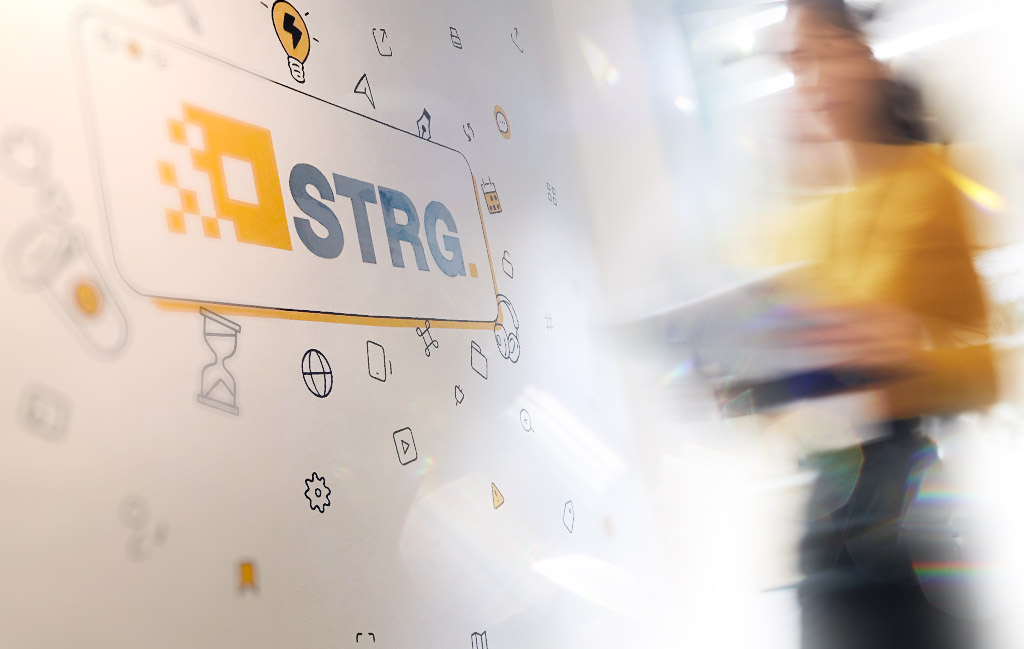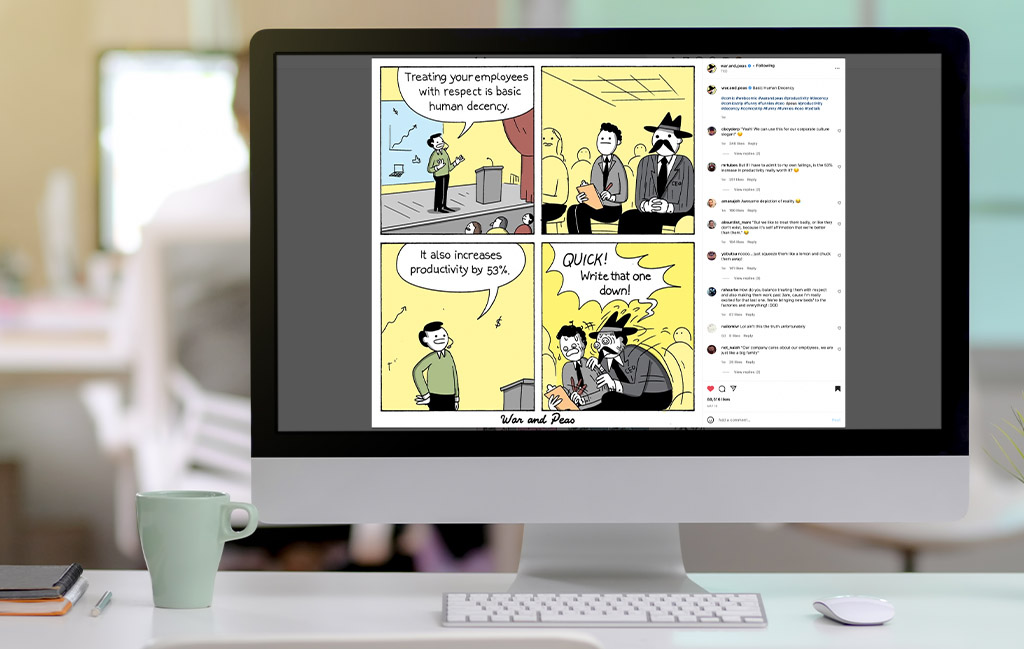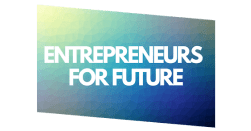A conversation with CEO Jürgen Schmidt about the “new normal” and the impact of the pandemic on the workplace, because at STRG “business as usual” means always being agile.
STRG decided to move into this fashionable and hip new office space in Vienna’s popular 7th District during the pandemic. Smart move, or do you have any regrets?
No, I think we did the right thing and I’d do it the same way today.
You weren’t concerned that the STRG team wouldn’t be allowed to return to the office? Paying rent for empty desks is no fun.
I knew we’d return to the office, but I quickly realized that we weren’t returning to the same structure and setup as we had pre-Covid. STRG’s Agile working structure already helped us prepare for the “new normal,” and we’d already discussed switching to something called “Activity-Based Working (ABW),” first mentioned by American architect Robert Luchetti in the 1970s and still discussed by companies like IBM to this day.
For STRG, ABW means that our office is used for meetings and creative sessions, but individual work is done remotely. This worked really well for us in the first half of 2020, but no one realized how much management work it required behind the scenes. While our new office was under construction, we had no physical workplace … but it was never a problem. In fact, our new office space is smaller than before, but our staff continues to grow. This might seem contradictory, but we aren’t planning to add more space despite our growth, thanks to the lessons we’ve learned during the pandemic.
In hindsight, would you have designed the office differently, architecturally?
No, not significantly. We built a large conference room on one floor, but we won’t be hosting conferences for 30+ people anytime soon. Instead, we’ve repurposed it as a research lab.
I looked through our old calendars and saw that we only really needed such a large space three times in six years. My partner and I agreed that in the future, we’ll simply rent a cool conference space when the need arises.
What is the core value of returning to the office at all? Why can’t we just work from home, virtually?
Being together is crucial to building a unique and sustainable company culture. This doesn’t require being in the office every hour of every workday (as I mentioned earlier), but face-to-face interaction is still very important. Besides that, many of us enjoy the option of working in the office simply to get a break from being at home. For example, I work at the office two or three days a week, the rest remotely. When I’m having my first coffee in the morning, it’s great to have the choice.
What did you miss most when everyone worked at home during the lockdown?
The social interaction. We used to have an annual company retreat in the mountains. My favorite part was the Friday evening get-together, we could casually discuss things with each other that we never would in the office.
Getting to know one’s team members personally is quite important. We respect each other’s privacy, but knowing that one’s coworker has a six-month-old baby at home, for example, you can better understand the impact this might be having on his work.
During the first lockdown, we tried to virtualize our group social interactions. We even live-streamed cooking sessions together! It was important for the team to have some anchor points where they could get together and socialize outside of a normal business setting, but this works much better in-person.
What was STRG’s back-to-office strategy?
When the first lockdown eased up in May 2020, we planned to get back in the office after the summer holidays. But then the Delta variant forced us to keep things mostly virtual.
Initially, we wanted our staff to come back half time, but then we decided against mandating this. The outcome was that our people came in half time voluntarily! If employees feel their only choice is either risking getting sick or losing their job, they’ll feel that management is insensitive to their needs.
Has productivity gone up or down?
Actually, it has increased and has never been better. We are software developers, so the main part of our job is to solve problems/puzzles, and this can be done at home or in the office. But when you are at the office and can’t wrap your head around solving a puzzle, you take a break for a few hours, maybe work on something else. But when you’re at home, you go to your kitchen to cook some food, or do your laundry, or take a walk, go shopping – but it’s not part of your job, not “billable hours.”
Be like STRG: Jürgen’s top three tips for managing the workforce through difficult times
The pandemic has been our “school” and we have learned a ton. There’s no going back a grade now, only moving forward and finding new ways of working together to make a better world for us all.
- Be as Agile as possible, even if you’re not in the software-development business. It makes you more flexible, shortens your decision-making time and keeps you faithful to your decisions.
- Take responsibility for the management decisions you make. Trust your team and don’t blame them if something doesn’t work out. My mentor, who’s now in his 70s, told me years ago, “if you can’t trust your team, YOU have made the mistake.” I objected, telling him that I just couldn’t trust this one employee. He replied, “but YOU hired him. YOU made the wrong decision!” Responsibility is about admitting your own mistake and not blaming others. That creates trust in every direction and keeps your staff loyal.
- When you ask for feedback from your staff, be prepared to heed it, or else don’t ask them any questions about things you don’t want to have changed! I would never ask for my staff’s opinion on our barista-style coffee machine here, because it’s not up for discussion. If you want Nespresso, go somewhere else!
Human(e) resources
How has the pandemic affected employee “churn?” Did you have to let anyone go because they couldn’t manage working from home?
We made a management decision not to fire existing employees during the lockdowns, because it would have been so hard for them to find another job, so our staffing remained steady throughout the lockdown.
We’ve actually hired new staff since the pandemic, signed their contracts and shipped them new company laptops without actually meeting them in person. You need a lot of trust for that!
What flextime arrangements have you put into place? Did your staff expect that you would make home-office a permanent option?
A company needs to offer such flexibility. We’re fortunate that our staff is arranged into scrum teams that autonomously decide what their working schedules are and what in-person meetings are necessary.
“According to a survey by the accounting firm EY, 81% of employees said they no longer wanted to work in the office every day of the week.”
Elon Musk just told all of the Tesla employees to come back to the office full-time or else they should resign. And Apple Inc. got some bad P.R. last year when they mandated their employees to return to the office on three fixed days per week, but some employees were insulted that their needs for more flexibility were being ignored by management and they complained very publicly. How does STRG balance its employee’s needs with its management goals?
We had a big discussion back in 2018 and 2019 about management inflexibility. Now, I really appreciate that our staff gives quite open and direct feedback to management, but three or four years ago, I thought they were crazy to criticize me: “How dare you speak up against the King? You’ll end up in prison!” I have come to realize that we have a really good team and 99% of their criticism is spot on and needs to be addressed.
“If management doesn’t follow the rules, how can we expect our teams to?”
I recently made the mistake of unilaterally asking one team member to provide his expertise at a client meeting. Both he and his team got really upset that I didn’t go through the scrum structure we’d implemented, and I realized that I didn’t follow the rules we’d all agreed on. If management doesn’t follow the rules, how can we expect our teams to?
Has the pandemic changed the way you evaluate employees?
Because we couldn’t hold our annual retreats, we did two or three rounds of individual interviews with our staff – usually two managers meeting with each team member – to find out how each person is getting along, and how committed he or she is to the company, team and projects. It’s also necessary to know about the private circumstances of each employee, so that we can react more fairly to any developing issues.
What was the goal of those meetings?
It was about getting an intimate sense of the individual and to give him or her a chance to table any relevant personal or business topics. Nearly everyone on the team gave us positive feedback on how we handled the pandemic situation, in terms of economics, team culture, and how we interacted virtually.
As software developers, we know that our main capital is our staff’s know-how.
“If you are attractive to employees, you are attractive to clients. If no one wants to work for you, no one will want to buy your product either.”
Does offering flextime make STRG a more attractive employer and more attractive to clients?
That’s my philosophy: If you are attractive to employees, you are attractive to clients. If no one wants to work for you, no one will want to buy your product either. Our values emphasize client service – if clients need to get in touch with us, they need to know it will be a positive experience, not to worry that they’ll be harassed by some disgruntled employee.
Are you concerned about cyber-security breaches resulting from remote office work?
Our office work is all stored in the Cloud, accessible only with a highly secure VPN tunnel. Everyone uses company hardware, not their own. The advantage we have over other companies is that our staff are all tech geeks – they can spot a phishing scam immediately and they typically have better internet connections at home than we have in the office!
To Zoom or not to Zoom? That is the question.
Are your meetings now hybrid – partly in-office and partly virtual?
The pandemic experience taught us that a normal meeting is a virtual meeting and that in-person meetings are the exception. We hold in-person meetings only when it’s necessary to do creative work together, this “action-based” concept.Besides such creative sessions and some client meetings, our other meetings are virtual, even when some participants are working here onsite.
“The pandemic experience taught us that a normal meeting is a virtual meeting and that in-person meetings are the exception.”
Did meeting dynamics change when they went virtual?
In communications theory, there is the concept of three-dimensional interaction in a physical space vs. two-dimensional on a screen. What we discovered with virtual meetings is that people talk up only when they really have something valid to say, they take less time to make their point, and it’s way easier for less assertive personalities to get a word in edgewise, because they all share the same sized 2-D frame on screen. The quality of meetings has improved as a result.
“I would never go back to ‘normality’ because that was not normal”
What is the most important lesson you’ve learned from the pandemic?
As I’ve mentioned in previous posts and public lectures, I would never go back to “normality” because that was not normal. It was horrible – we were all stressed, flying around Europe for no good reason. I must have spent €30-40K per year on travel expenses. We used to have a motor pool so our staff could reach clients, but we’ve now sold off our fleet of autos. I used to pay for VIP status at the Vienna airport because I was there three times a week! I have hardly been there in the last two years and I haven’t missed a thing!
We need to learn from this difficult period and move forward to make the world a better place to live and work.
- Call STRG's CEO Jürgen, or write a mail juergen.schmidt@strg.at Mobile: +43 699 1 7777 165







